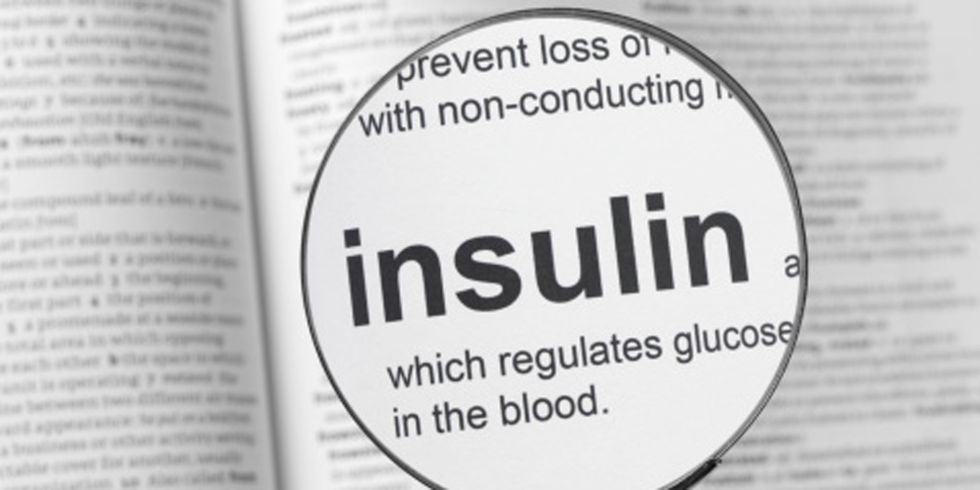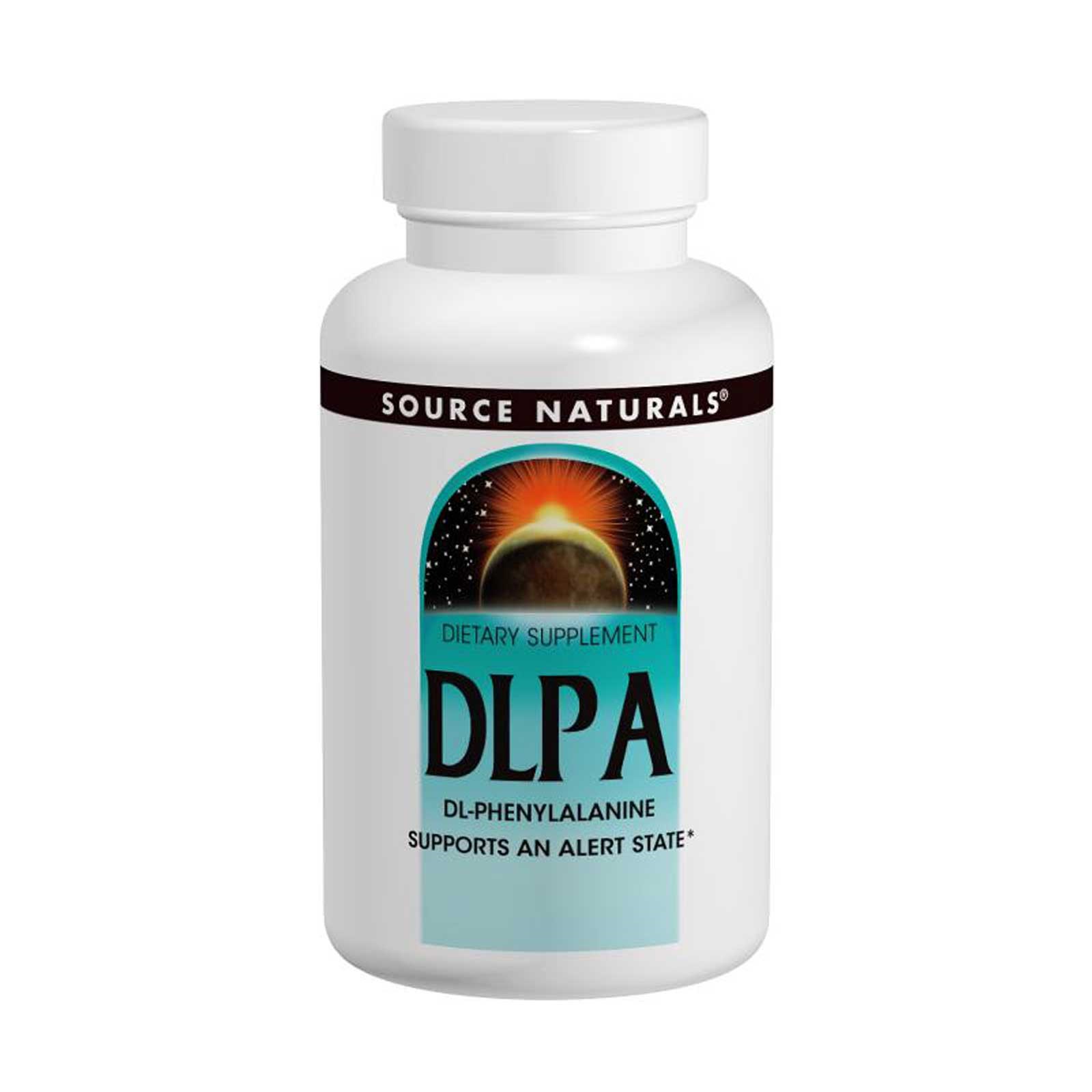Today I want to discuss "intranasal insulin", a cutting-edge therapy that could help a lot of people.
Neurologists and psychiatrists tend to undervalue the impact of hormones originating outside the brain.
Until modern medicine treats the entire body as one unified system, people will continue to lose faith in conventional practitioners and look elsewhere for solutions to their chronic brain and mental health problems.
As Dr. Suzanne Craft, Ph.D, Professor of Gerontology and Geriatric Medicine, explains:
“People are now starting to understand the critical interaction between the brain and the body and that many of the peptides and hormones produced in the body have very substantial roles to play in the brain. I think we’re at the beginning of a very exciting era in which we’re going to be able to start putting together these systems to understand Alzheimer’s disease, which is clearly a disease of the entire organism, not just of the brain.”
Insulin is one of the hormones that significantly affects brain function.
It's been shown to pass the blood-brain barrier and act on insulin receptors directly within the brain (3, 4).
Not only does our body produce and release it, but it can also be taken as a medication, particularly for the treatment of diabetes (1, 2).
Researchers have found that insulin has “neurotrophic, neuromodulatory, and neuroprotective effects” by:
Promoting neuronal growth;
Regulating the levels of certain neurotransmitters;
Increasing brain energy levels (ATP in your mitochondria);
Increasing blood flow in the brain;
Preventing dopaminergic neuron loss;
Protecting against oxidative stress in the brain by restoring antioxidants and energy metabolism (5-13).
“In the brain, insulin has a number of roles to play. It promotes glucose uptake in the neurons of the hippocampal formation and the frontal lobes, areas that are involved in memory. Insulin also strengthens the synaptic connections between brain cells, helping to form new memories. In addition, insulin regulates the neurotransmitter acetylcholine, which plays an important role in learning and memory.”
So, it clearly does a lot in the brain, and research shows that it can be therapeutic for a number of mental health conditions, particularly Alzheimer’s disease.
In a new therapeutic approach, commercially-available insulin (Novalin R) is prepared and added to nasal spray bottles, and sprayed and inhaled through the nose to support brain and mental health.
Dr. William Banks, Professor of Internal Medicine and Geriatrics, says there are more than 100 different intranasal compounds that are being tested for the treatment of Alzheimer’s disease.
“Intranasal insulin” is just one of them, and it’s one of the more promising ones, as it’s been reported to significantly enhance memory, increase mental energy, reduce brain fog, improve mood, and lower anxiety and stress levels.
The Link Between Alzheimer’s Disease, Insulin and Diabetes
Many of the brain health experts I’ve talked to are convinced that Alzheimer’s disease should actually be called "Type 3 diabetes".
This is because diabetes and insulin are closely linked to cognitive decline and dementia.
Many studies show that diabetes is associated with an increased risk of cognitive dysfunction, and people with diabetes are 2 to 3 times more likely to be diagnosed with Alzheimer’s disease and mild cognitive impairment than non-diabetics (14-21).
Researchers have also found that insulin declines in the brain as people age, and patients with Alzheimer’s disease often have insulin resistance and reduced levels of insulin in their brains (25-30)
But what if insulin deficiency is detected in the brain, and then insulin is supplied to the brain, could neurodegeneration and the development of dementia be prevented? And could the progression of existing Alzheimer’s disease be halted?
The answers to these questions appears to be yes:
Diabetic patients who take insulin have improved memory and reduced rates of Alzheimer’s disease;
Elderly diabetics who take insulin have less severe Alzheimer’s disease compared with non-diabetics;
Insulin improves cognition and memory in people with Alzheimer’s disease; and
Insulin prevents and reverses brain degeneration and cognitive impairment in diabetic animals (22-24).
Check out the below video to learn more from one of the leading researchers in the field:
Cutting-Edge Research Shows That Intranasal Insulin Improves Cognition and Memory
The intranasal route of insulin administration provides direct access to the cerebrospinal fluid and brain.
This allows insulin to directly enter the brain from the nose, and bind to receptors within specific areas of the brain that are involved in memory and cognition (42).
“Insulin receptors in the brain are found in high densities in the hippocampus, a region that is fundamentally involved in the acquisition, consolidation, and recollection of new information. ”
An increasing amount of research has been published over the last ten years, demonstrating that intranasal insulin can significantly improve cognition, attention, memory and overall brain function in people with mild cognitive impairment and Alzheimer’s disease (31-33, 38-39, 43-45).
In fact, there are over 30 randomized, double-blind, placebo-controlled trials showing that it’s effective at improving memory, learning and cognitive performance in humans (34-37).
Yet most people aren’t aware of it, and doctors aren’t prescribing it, while millions of people suffer from dementia.
One study found that it improved objective biomarkers of neurodegeneration, including amyloid deposits and tau pathology, in people with Alzheimer’s disease within a few months. In the group of patients that didn’t receive intranasal insulin, brain function continued to deteriorate (40).
In another study, researchers gave intranasal insulin to 104 adults with mild cognitive impairment or Alzheimer’s disease. At the end of the 4-month study, the participants who received insulin had significantly better memory and cognitive function compared to the group who didn’t receive insulin (41).
The researchers also found that the improvements in cognition were correlated with improvements in objective biomarkers, and concluded that “intranasal insulin therapy can help to stabilize, slow, or possibly even reverse the course of Alzheimer’s disease (41).
Because of the promising research so far, the US government is currently funding a two-year long clinical trial to see if intranasal insulin will help 240 people with Alzheimer’s disease. Results from the Study of Nasal Insulin in the Fight Against Forgetfulness (SNIFF) are expected to be released in 2017.
And intranasal insulin doesn’t just help elderly people with dementia. It’s also been shown to improve memory in younger, healthy individuals (46-51).
Intranasal Insulin and Other Brain and Mental Health Disorders
Alzheimer’s disease isn’t the only brain and mental health condition that can benefit from intranasal insulin.
Here are some others:
ADHD and drug addiction – Insulin affects dopamine, which is a neurotransmitter linked to both these conditions (52).
Depression, anxiety and anger – In one study, 38 healthy people took intranasal insulin for 8 weeks and experienced enhanced mood, increased self-confidence and reduced anger. Another study found that it affected heart-rate variability (53, 59).
Stroke – Researchers point out that “intranasally administered insulin possesses many of the ideal properties for acute stroke neuroprotection” (54, 62).
Bipolar disorder – One study found that intranasal insulin significantly improved executive function in patients with bipolar disorder (55).
Neurodevelopmental disorder – Two studies have found that intranasal insulin improves cognition, autonomy, motor activity, nonverbal communication, social skills and developmental functioning of children and adults with a rare neurodevelopmental disorder (Phelan-McDermid syndrome) (57, 58).
Overall brain function – “Intranasal insulin appears to restore complex neural networking in the direction of normalization”. In other words, it seems to “reboot” the brain (56).
Parkinson’s disease and Down Syndrome – There is no evidence for this yet but there are ongoing trials looking into whether intranasal insulin could help people with these conditions (60, 61).
Safety of Intranasal Insulin and How to Try It Yourself
Numerous studies show that intranasal insulin is incredibly safe and does not cause any significant adverse side effects. The only minor side effects I came across were dizziness, nose bleeding and mild rhinitis, but these were rare (63-65).
This is because unlike regular insulin administration, intranasal insulin only affects the nose and brain. It doesn’t enter the bloodstream, change insulin levels throughout the entire body, or cause low blood sugar (66-83).
Overall, I believe the benefits outweigh the risks and it’s worth trying, especially if you’re struggling with mild cognitive impairment or early Alzheimer’s disease. It may be another decade or more until the research trickles down and reaches your doctor’s office. Research shows that it takes about 17 years for new scientific evidence to be implemented in clinical practice.
However, I’m not a doctor and you should definitely talk to your doctor about this if you’re considering trying it. If you have an open-minded doctor, perhaps they will support you in trying it. Don’t be surprised if they dismiss the idea entirely though.
With that said, you can easily and legally buy insulin yourself. It’s available over the counter without a prescription at any pharmacy (in the US and Canada). Pharmacists hold it behind the counter and you just have to walk up and ask for “Novolin R.” In Canada, it’s called “Novolin Toronto.”
It’s that simple. You don’t need to provide personal identification or sign anything. It costs about $30.
After that, you can get a nasal spray bottle - like this one or this one.
Then, use pliers to carefully remove the rubber cap from the insulin vial, and pour the insulin into the spray bottle.
At this point, you’re ready to use it. Make sure to keep it in the fridge when you're not using it.
Again, I’m not a doctor. So talk to your doctor about this before trying it. But I feel this is worth sharing and writing about considering it has massive potential to help many people who are struggling day-to-day.
Dosage
Each spray from the nasal bottle is 0.1mL or 10IU of insulin.
Dosages in human studies range from 10IU to 160IU (1 to 16 sprays) daily.
In the longest lasting study, participants took either 20 IU (2 sprays) or 40IU (4 sprays) of insulin daily for four months (86).
So, if you’re going to try it, I wouldn’t take more than 40IU (4 sprays) for longer than 4 months.
However, participants in the ongoing SNIFF trial have been taking intranasal insulin for more than one year, so once the results from that study are released in 2017, my recommendation may change.
Overall, self-experimentation is necessary to find the correct dosage that works best for you.
Conclusion
Intranasal insulin is a very impressive and exciting substance, and the lack of side effects is encouraging.
If you’re looking to improve your memory and brain function and avoid Alzheimer’s disease, it’s definitely worth considering and talking to your doctor about it.
All that’s needed is:
Novalin R (US) or Novalin Toronto (Canada)
I’m aware that this might be little bit “out there” for some people, but I think it has the potential to help a lot of people reach optimal brain and mental health.
Please share with anyone who is struggling with cognitive impairment or the early signs of dementia because it isn't a very well known treatment.
References:
(1) http://link.springer.com/article/10.1007/s00125-003-1153-1
(2) http://diabetes.diabetesjournals.org/content/31/11/957.short
(3) http://press.endocrine.org/doi/abs/10.1210/edrv-13-3-387
(4) http://www.ncbi.nlm.nih.gov/pubmed/26401706
(5) https://www.ncbi.nlm.nih.gov/pubmed/15750214/
(6) https://www.ncbi.nlm.nih.gov/pmc/articles/PMC4191295/
(7) https://www.ncbi.nlm.nih.gov/pubmed/15750214/
(8) https://www.ncbi.nlm.nih.gov/pubmed/22586589
(9) https://www.ncbi.nlm.nih.gov/pubmed/18348871
(10) https://www.ncbi.nlm.nih.gov/pubmed/23907764
(11) https://www.ncbi.nlm.nih.gov/pubmed/26040423
(12) https://www.ncbi.nlm.nih.gov/pubmed/26777890
(13) https://www.ncbi.nlm.nih.gov/pmc/articles/PMC4391678/
(14) https://www.ncbi.nlm.nih.gov/pmc/articles/PMC4191295/
(15) https://www.ncbi.nlm.nih.gov/pubmed/22201977/
(18) http://care.diabetesjournals.org/content/20/3/438
(19) https://www.ncbi.nlm.nih.gov/pubmed/11678970
(20) https://www.ncbi.nlm.nih.gov/pubmed/10647755
(21) http://www.alzheimersanddementia.com/article/S1552-5260(13)02918-X/abstract
(22) https://www.ncbi.nlm.nih.gov/pubmed/15750215/
(23) https://www.ncbi.nlm.nih.gov/pubmed/23565496/
(24) https://www.ncbi.nlm.nih.gov/pubmed/22201977/
(25) https://www.ncbi.nlm.nih.gov/pubmed/17049785?dopt=Abstract
(26) https://www.ncbi.nlm.nih.gov/pubmed/17430239/
(27) https://www.ncbi.nlm.nih.gov/pubmed/16340083/
(28) https://www.ncbi.nlm.nih.gov/pmc/articles/PMC4743662/
(29) https://www.ncbi.nlm.nih.gov/pubmed/18549783
(30) https://www.ncbi.nlm.nih.gov/pubmed/15750215
(31) http://www.karger.com/Article/Abstract/106378
(32) http://link.springer.com/article/10.1007%2Fs40263-013-0076-8
(33) http://jamanetwork.com/journals/jamaneurology/fullarticle/1107947
(34) https://www.ncbi.nlm.nih.gov/pubmed/25008180/
(35) https://www.ncbi.nlm.nih.gov/pubmed/16266773
(36) https://www.ncbi.nlm.nih.gov/pmc/articles/PMC3260944/
(37) https://www.ncbi.nlm.nih.gov/pubmed/21883804
(38) https://www.ncbi.nlm.nih.gov/pubmed/22710630?dopt=Abstract
(39) https://www.ncbi.nlm.nih.gov/pubmed/21911655?dopt=Abstract
(40) https://www.ncbi.nlm.nih.gov/pmc/articles/PMC4743662/
(41) https://www.ncbi.nlm.nih.gov/pubmed/219116/
(42) https://www.ncbi.nlm.nih.gov/pmc/articles/PMC3443484/
(43) https://www.ncbi.nlm.nih.gov/pmc/articles/PMC2804944/
(44) http://www.ncbi.nlm.nih.gov/pubmed/17942819/
(45) https://www.ncbi.nlm.nih.gov/pubmed/23507773
(46) https://www.ncbi.nlm.nih.gov/pubmed/20719831/
(47) http://www.psyneuen-journal.com/article/S0306-4530(04)00052-6/abstract
(48) https://www.ncbi.nlm.nih.gov/pubmed/15288712
(49) https://www.ncbi.nlm.nih.gov/pubmed/15288712?dopt=Abstract
(50) https://www.ncbi.nlm.nih.gov/pubmed/19091002?dopt=Abstract
(51) https://www.ncbi.nlm.nih.gov/pmc/articles/PMC4391678/
(52) http://www.news-medical.net/news/2007/10/18/31385.aspx
(53) https://www.ncbi.nlm.nih.gov/pubmed/15288712
(54) https://www.ncbi.nlm.nih.gov/pmc/articles/PMC4828994/
(55) https://www.ncbi.nlm.nih.gov/pubmed/23107220
(56) https://www.ncbi.nlm.nih.gov/pubmed/25249577
(57) http://www.nature.com/ejhg/journal/v24/n12/full/ejhg2016109a.html
(58) https://www.ncbi.nlm.nih.gov/pubmed/18948358
(59) http://diabetes.diabetesjournals.org/content/63/12/4083.long
(60) https://clinicaltrials.gov/ct2/show/NCT02064166
(61) https://clinicaltrials.gov/ct2/show/NCT02432716
(62) https://www.ncbi.nlm.nih.gov/pubmed/26040423
(63) http://www.ncbi.nlm.nih.gov/pubmed/25374101
(64) https://www.ncbi.nlm.nih.gov/pubmed/18948358
(65) http://www.ncbi.nlm.nih.gov/pubmed/25374101
(66) http://press.endocrine.org/doi/pdf/10.1210/jc.2007-2606
(67) https://www.ncbi.nlm.nih.gov/pmc/articles/PMC4743662/
(68) https://www.ncbi.nlm.nih.gov/pmc/articles/PMC4743662/
(69) https://www.ncbi.nlm.nih.gov/pubmed/23719722?dopt=Abstract
(70) https://www.ncbi.nlm.nih.gov/pubmed/15288712?dopt=Abstract
(71) https://www.ncbi.nlm.nih.gov/pubmed/19091002?dopt=Abstract
(72) https://www.ncbi.nlm.nih.gov/pubmed/26777890
(73) https://www.ncbi.nlm.nih.gov/pubmed/15288712
(74) https://www.ncbi.nlm.nih.gov/pubmed/11992114
(75) https://www.ncbi.nlm.nih.gov/pubmed/26855666
(76) https://www.ncbi.nlm.nih.gov/pubmed/12951650
(77) https://www.ncbi.nlm.nih.gov/pubmed/15288712
(78) https://www.ncbi.nlm.nih.gov/pmc/articles/PMC2804944/
(79) https://www.ncbi.nlm.nih.gov/pubmed/12951650
(80) https://www.ncbi.nlm.nih.gov/pubmed/23107220
(81) https://www.ncbi.nlm.nih.gov/pubmed/24101698
(82) https://www.ncbi.nlm.nih.gov/pubmed/25337926
(83) https://www.ncbi.nlm.nih.gov/pubmed/25374101
(84) https://www.ncbi.nlm.nih.gov/pubmed/20876713
(85) https://www.ncbi.nlm.nih.gov/pubmed/15288712










